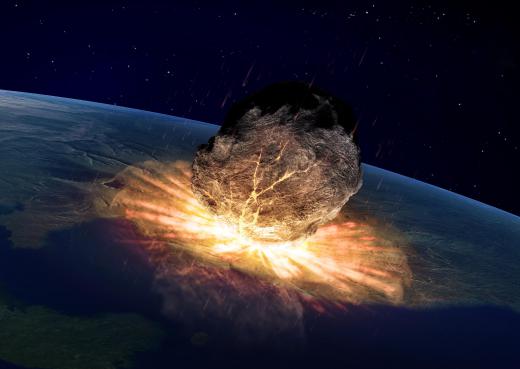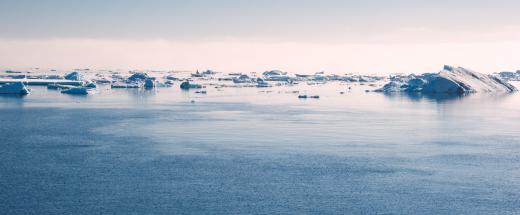What Was Earth Like During the Paleocene Epoch?
 Michael Anissimov
Michael Anissimov
The Paleocene epoch is the time on Earth between the Cretaceous-Tertitary extinction, 65.5 million years ago, until 55.8 million years ago. Paleocene means "old(er) new" in Greek. This is a reference to the fact that the Paleocene was the beginning of the Era of Mammals, which continues today, but was too primitive to contain modern animal orders.
During the Paleocene, climate was more like that of the Mesozoic (Age of the Dinosaurs) -- warm and wet, with the tropics extending to at least 45 degrees from the equator and temperate forests reaching the Poles. Large tracts of central Eurasia, North America, and southeast Asia were flooded. Antarctica was a temperate continent with marsupial fauna, still connected by the Antarctic peninsula to South America. This sealed off the Drake Passage and prevented the formation of the Antarctic Circumpolar Current, which would cause Antarctica to freeze solid about 22 million years after the end of the era.

At the very start of the Paleocene, much of the Earth's life was destroyed when a 6 mi (10 km) wide asteroid slammed into what is today the Yucatan peninsula in Mexico. This kicked up a dust cloud that covered the Earth for at least several years, killing most plants dependent on photosynthesis and the animals that require them to live. The largest animals -- the dinosaurs -- were all wiped out, along with pterosaurs (flying reptiles), plesiosaurs, pliosaurs, mosasaurs (aquatic reptiles), and many plants and invertebrates. This left open a vast variety of niches to be exploited by the primary surviving groups -- birds and mammals.

Most mammals throughout the Paleocene was relatively small -- under 20 kg (44 lb). Beginning the period off as small rodent-like mammals, within 10 million years they had diversified into a few new orders, most of which are now extinct. Xenartha, the mammalian clade that includes anteaters, tree sloths, and armadillos, is known to have branched off from the rest of placental mammals about 60 million years ago. Marsupials and placentals had diverged from each other well before the start of the period, as much as 130 million years ago. Ancestral forms of most living orders had come into existence shortly before the Paleocene -- including ungulates, insectivores, badger-like omnivores, etc.
Even and odd-toed ungulates diverged near the start of the Paleocene. Grass had not yet began to cover the Earth, most of the planet being covered in tropical and temperate forests instead. As such, most mammals were arboreal. South America, Antarctica, and Australia were separated from the rest of the world's land mass at the time, and were dominated by marsupial rather than placental fauna. Little is known of animals living in Antarctica and Australia during the Paleocene -- they are known to be placental, the descendants of Mesozoic mammals on each continent (the fossils of which are rare), and at least some of them were the predecessors of present-day Australian and South American marsupials. Phorusrhacids, "terror birds" evolved near the beginning of the Paleocene in South America and (probably) also lived in Antarctica, serving as apex predators. Marsupial or reptile fauna at the time (except for crocodiles) were oppressed by these avian killers.
Among the groups of placental mammals that thrived in Africa, North America, and Eurasia during this period are primates, plesiadapids (rodent-like ancestors of primates), and condylarths (the ancestors of all ungulates, which were the first true mammalian apex predators and larger herbivores). The mammalian superorders of Afrotheria, Laurasiatheria, and Euarchontoglires had split about 20 million years before the start of the Paleocene, so evolution during the Paleocene was a further diversification of these orders, the first available diversification after the extinction of the dinosaurs.
AS FEATURED ON:
AS FEATURED ON:












Discuss this Article
Post your comments